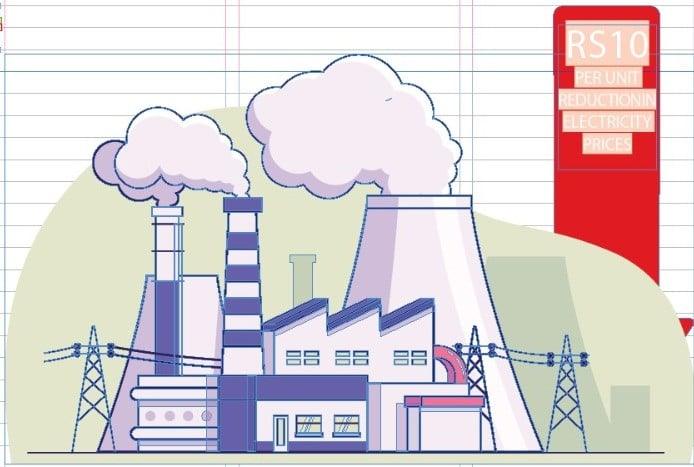Islamabad:
The government made a new package on Friday before foreign donors for up to RS10.5 per year. Unit reduction in prices for further use of electricity after consumers of the industrial and the agricultural sector to increase demand, which had dipped by one fifth due to insurmountable prices.
The power minister, Sardar Awais Laghari, shared the wider contours of the industrial support package (2026-28) with over a dozen representatives of international development organizations to seek their diplomatic support to reduce prices.
The package seemed to win traction with lenders, but their observations were centered on the sustainability of the increase in demand and viability of national net electricity. They raised concerns about relying on price signals solely to increase dwindling electricity demand rather than implementing extensive reforms in the energy sector, which includes ensuring the reliability of the national grid power.
The answer from the Minister of Power was awaited until the time of filing this story.
Government officials said the power department had informed foreign donors that it wanted to introduce a support package for a period of three years (2026-28) and expected their support. Among the participants were the World Bank, the Asian Development Bank (ADB) and other regional and international development organizations.
According to the proposal, the government wants to reduce the current average electricity price of RS33.5 per year. Unit with RS10.5, but only about the step -by -step use of electricity. It has suggested that industrial connection levels will be set to RS22.98 per year. Unit. For the agricultural sector, the rate will be the same, but the benefits will be RS7.77 per year. Unit due to the current RS30.75 per Device price.
Foreign diplomats were informed that the price reduction would only apply to additional electricity consumption compared to consumption from December 2023 to November 2024. In cases where there is no reference coating, the higher consumption of the relevant month or sanctioned load will be used for comparison.
The government claimed that the new package would be a subsidy and cost neutral and should neutralize any resistance from the International Monetary Fund (IMF) this time. The IMF had rejected a similar package last year because of its consequences for other consumers.
According to the proposal, RS3.23 per Unit Debt Development Fee and the quarterly customs adjustment not for the industrial support package. However, this exclusion may damage housing consumers if debt service prices may increase further to provide sufficient funds to withdraw RS1.2 trillion debt acquired from banks to tackle circular debt.
A government official noticed an element of discrimination, as a large number of consumers in Sindh may switch to the national network due to high gas prices, making them eligible for step-by-step benefits compared to Punjab-based industries that are already dependent on the national network.
Due to insurmacy, industrial consumers are increasingly moving away from the national electricity grid. Industrial electricity demand fell by 20% over the past two years. Consequently, the number of online -metered industrial consumers increased to almost 6,900 in the 2024 financial year compared to only 1,570 in 2022. Compared to about 16 cents per Unit locally costs the US9 cents in India and US10 cents in Bangladesh, Pakistan’s two largest competitors in global markets.
However, there is still concern about the package of sustainability and whether such price reductions can be beneficial without tackling the underlying problems in the electricity sector. Foreign diplomats were informed of reforms that the government assumes. One participant told The Express Pakinomist that after examination it seemed that all such initiatives fell behind extended deadlines. The competitive market is not yet operational and the government told the participants that it could be operational in September. Disputes on wheel fees persist and the revised integrated generational capacity expansion plan also faces delays. The privatization of power distribution companies has not been accelerated, and the government remains unwilling to end the uniform electricity price policy that punishes Punjab-based consumers for theft in other provinces.
A larger lender asked about excess generational capacity requirements and questioned whether the system can generate power corresponding to the installed capacity and whether the transmission system can handle the full load.
Sources said there was also concern about the viability of increased demand when the package ends. Evidence from similar industrial support packages in the past showed that demand tips were typically modest and did not result in persistent grid dependence.
Sources added that there are potential risks that the actual cost of this package may exceed the proposed marginal rate, especially during the summer season.
An important view was that any effort to restore industrial demand through a support package should be made under a wider framework that balances both price and non-price elements. Implementation risks, grid reliability and quality of service remain critical blind spots that can limit the success of the package.
Donors advised the government to restore industrial demand online through a combination of reliable service delivery and sect -word planning rather than relying on reactive short -term measures.



